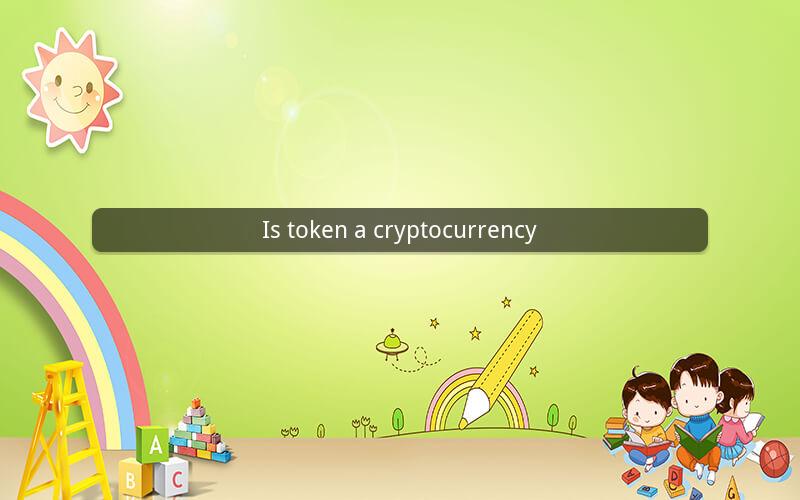
Table of Contents
1. Introduction to Cryptocurrency
2. Understanding Tokens
3. The Difference Between Tokens and Cryptocurrencies
4. The Role of Tokens in the Cryptocurrency Ecosystem
5. Types of Tokens
6. The Rise of ERC-20 and ERC-223 Tokens
7. Tokenomics: The Economics of Tokens
8. The Future of Tokens in Cryptocurrency
9. Conclusion
---
1. Introduction to Cryptocurrency
Cryptocurrency has revolutionized the financial industry by introducing a decentralized and digital medium of exchange. Unlike traditional fiat currencies, cryptocurrencies operate on blockchain technology, ensuring transparency, security, and immutability. Bitcoin, the first cryptocurrency, was launched in 2009, and since then, the cryptocurrency market has witnessed exponential growth.
2. Understanding Tokens
Tokens are digital assets that are native to a blockchain or a decentralized application (DApp). They are created through a process called tokenization, which involves generating a new set of digital units that can be used for various purposes. Tokens can represent ownership, access rights, or utility within a specific ecosystem.
3. The Difference Between Tokens and Cryptocurrencies
While both tokens and cryptocurrencies are digital assets, there are distinct differences between them. Cryptocurrencies, such as Bitcoin and Ethereum, are standalone digital currencies that can be used for transactions. Tokens, on the other hand, are built on top of existing blockchains and serve specific purposes within those ecosystems.
4. The Role of Tokens in the Cryptocurrency Ecosystem
Tokens play a crucial role in the cryptocurrency ecosystem by facilitating various functions. They can be used for:
- Payment: Tokens enable users to make transactions within a specific ecosystem or between different blockchains.
- Access Rights: Tokens can grant users access to exclusive services or content within a DApp or platform.
- Voting: Tokens can be used for governance purposes, allowing token holders to participate in decision-making processes.
- Utility: Tokens can represent real-world assets, such as stocks, bonds, or commodities, making them accessible through a digital platform.
5. Types of Tokens
There are several types of tokens, each serving a unique purpose:
- Utility Tokens: These tokens are used to provide access to a specific service or product within a DApp.
- Security Tokens: These tokens represent ownership or investment rights in a company or project.
- Asset Tokens: These tokens represent real-world assets, such as real estate, gold, or art.
- Governance Tokens: These tokens grant users voting rights within a decentralized organization or platform.
6. The Rise of ERC-20 and ERC-223 Tokens
Ethereum, one of the most popular blockchains, introduced the ERC-20 and ERC-223 token standards. These standards define the rules and functions for creating fungible tokens on the Ethereum blockchain. ERC-20 tokens are widely used for initial coin offerings (ICOs) and decentralized applications (DApps), while ERC-223 tokens offer additional security features, such as preventing double-spending.
7. Tokenomics: The Economics of Tokens
Tokenomics refers to the economic principles and mechanisms that govern the supply, distribution, and utility of tokens. Understanding tokenomics is crucial for evaluating the potential success of a token. Key aspects of tokenomics include:
- Supply: The total number of tokens that will be created.
- Distribution: How tokens are distributed among different stakeholders, such as founders, investors, and community members.
- Utility: The functions and uses of tokens within a specific ecosystem.
- Burn Mechanism: A process where tokens are destroyed to reduce the total supply and increase the value of existing tokens.
8. The Future of Tokens in Cryptocurrency
The future of tokens in the cryptocurrency ecosystem is bright. With advancements in blockchain technology and increasing adoption, tokens are expected to play a more significant role in various industries. Some potential developments include:
- Interoperability: The ability of different blockchains to interact and exchange tokens seamlessly.
- Regulatory Compliance: The development of frameworks that will allow tokens to comply with regulatory requirements.
- Tokenization of Real-World Assets: The expansion of tokenization to various real-world assets, such as real estate, stocks, and bonds.
9. Conclusion
Tokens have emerged as a vital component of the cryptocurrency ecosystem, offering a wide range of functions and use cases. As the industry continues to evolve, tokens are expected to play an increasingly significant role in shaping the future of digital finance.
---
Questions and Answers
1. What is the primary difference between a cryptocurrency and a token?
- Cryptocurrencies are standalone digital currencies, while tokens are built on top of existing blockchains and serve specific purposes within those ecosystems.
2. What are utility tokens used for?
- Utility tokens are used to provide access to a specific service or product within a DApp.
3. What is the ERC-20 token standard?
- The ERC-20 token standard is a set of rules and functions for creating fungible tokens on the Ethereum blockchain.
4. What is tokenomics?
- Tokenomics refers to the economic principles and mechanisms that govern the supply, distribution, and utility of tokens.
5. What is the purpose of a burn mechanism in tokenomics?
- The burn mechanism is used to reduce the total supply of tokens, thereby increasing the value of existing tokens.
6. How do tokens facilitate governance in a DApp?
- Tokens can be used for governance purposes, allowing token holders to participate in decision-making processes.
7. What are the benefits of tokenization of real-world assets?
- Tokenization of real-world assets makes them accessible through a digital platform, reducing transaction costs and increasing liquidity.
8. What is the potential future of interoperability in the cryptocurrency ecosystem?
- The potential future of interoperability is the ability of different blockchains to interact and exchange tokens seamlessly.
9. How is regulatory compliance expected to evolve in the token space?
- Regulatory compliance in the token space is expected to evolve through the development of frameworks that will allow tokens to comply with regulatory requirements.
10. What is the role of tokens in the financial industry's future?
- Tokens are expected to play a more significant role in various industries, facilitating digital transactions, access rights, and governance.